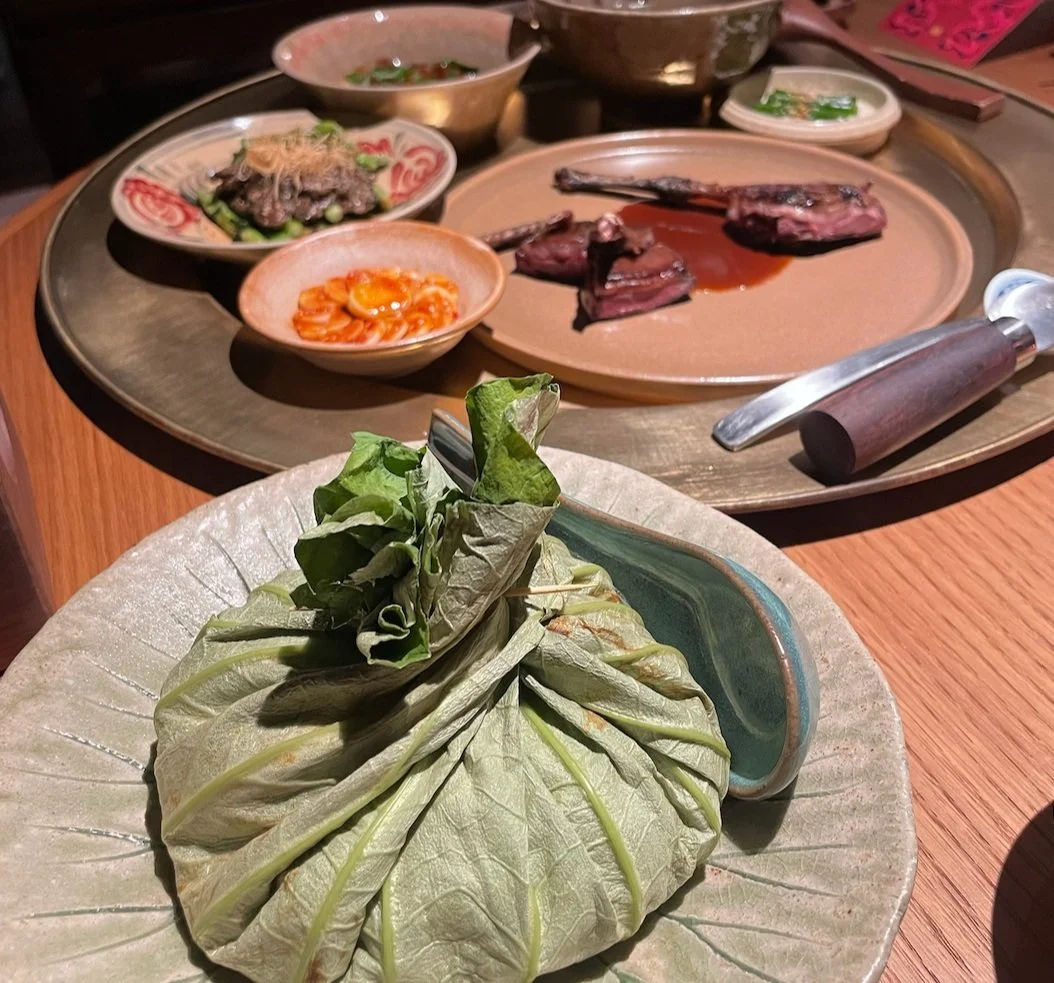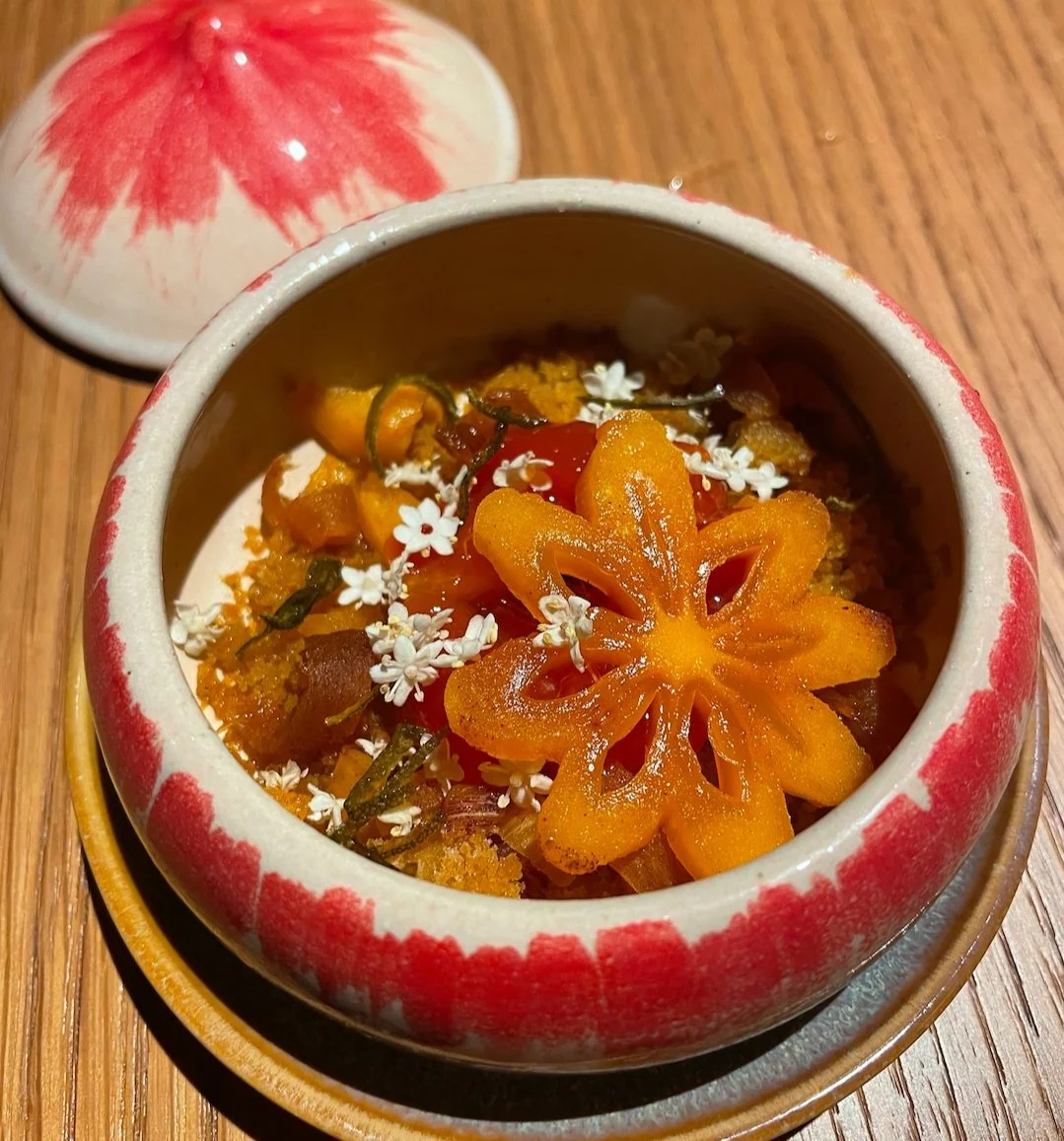Review: Mien Saigon
I love when I revisit a restaurant I’ve been to since the beginning and see how much it’s leveled up—it’s not something you see often! But Mien is definitely an exception.
For a bit of context, when Mien Saigon first opened, it had a fusion, Eurocentric take on "Vietnamese cuisine," focusing on French-Vietnamese dishes. You’d find things like steak with inklings of Vietnamese flavors, all served in a minimalist and somewhat “cold” atmosphere. In a sea of modern Vietnamese openings at the time, it felt pretty typical—even with its Michelin selection—so I wasn’t that impressed.
But when they filled me in on their new menu, look, and fresh outlook—marking a new chapter for this award-winning mod-Viet ‘OG’ in Saigon’s culinary scene—I knew I had to give it another shot. And I’m so glad I did.
Mien’s New Homestyle Vibe
"Mien" means "roof," and the new concept is all about welcoming guests into a homey atmosphere. Picture cozy little nooks, roof tiles reminiscent of traditional Vietnamese village homes, and furniture like vases and shelves that fit right into a family setting, complete with linen curtains for privacy around dark wood round tables and sofas. The tables are perfect for groups but still intimate enough for couples, all offering an unobstructed view of the smaller, more intimate open kitchen.
Emphasizing that sense of "family" and home-style hospitality, Anh, the restaurant manager, shares that the service has been revamped to feel more casual. Each team member is encouraged to be personable and engage in friendly banter with guests, which can make the atmosphere a bit lively, especially with the sounds from the open kitchen.
But hey, what Vietnamese house is quiet?
While it might not align with the traditional idea of "fine dining," Anh insists they don't want to be labeled as a fine dining restaurant. I find that a bit confusing, especially given the pricing, the exclusive tasting menu, and dinner-only service—traits commonly associated with fine dining.
Still, I’m keeping an open mind.
Who says a casual restaurant can’t have a fine dining menu? And why should fine dining restaurants be limited to one style, especially as more restaurant in Vietnam evolve and continue to redefine these boundaries?
A tasting menu rooted in Central Vietnam
This time around, the menu focused on elevated nostalgia, featuring dishes inspired by Hue Central Imperial Cuisine alongside familiar favorites like Bánh bột lọc—but with a twist.
Instead of being served in steamed pandan leaves with the usual fillings of dried shrimp and pork dipped in fish sauce, these are wrapped around tender fresh pomfret (which actually changes daily based on the market's catch) in a delicious broth made from pomfret fish bones and coconut. Yes, coconut.
The appetizers alone were superb and set the stage for the following 12 courses. I loved the plating, which felt authentically Vietnamese without trying too hard to be something else. For one of the courses, it was unmistakably a Banh Xeo but with squid, alongside a charcoal-grilled ‘Banh Cuon’ wrapped around a squid stuffed with rich squid roe, delicious. But, the la piece de resistance was the pork belly which was beautifully coated in green mango, lemon basil leaves and Yacón.
Another standout dish was the Nha Trang lobster wrapped around Dalat chocolate tomato, which had been soaked in fermented baby shrimp and served in a spicy, tangy, and zesty sauce made from the shrimp. I wouldn’t go so far as to say that Nha Trang’s lobster could rival Botan Ebi, but I’d say it comes pretty close in terms of texture and size.
A standout was the main course: a sharing platter inspired by Hue's imperial cuisine from Central Vietnam—a first for me in Saigon. It featured dishes once served to Vietnamese kings, like “cơm bát bửu,” rice wrapped in lotus leaves, named after the Eight Auspicious Signs in Buddhism. The dish combines ingredients like meat, shrimp, mushrooms, eggs, carrots, and beans in small cubes. Originally part of Nguyen royal culinary tradition, it remains a must-try specialty in Hue today.
Lotus Rice
A sharing platter of small dishes including beautifully braised tendon in ginger and fish sauce, Vietnamese coot in a spicy jus, and braised beef heart with stir-fried vegetables
The platter included an array of small dishes, like beautifully braised tendon in ginger and fish sauce, Vietnamese coot in a spicy jus, and braised beef heart with stir-fried vegetables. There was also ginkgo nut rice steamed in lotus leaves, which Jessy served me—a lovely nod to Vietnamese food culture where the youngest serves the oldest. What makes me happiest is not just the flavours but the rituals behind these dishes. This was the first time I texted my father about a ‘fine dining’ restaurant I think he’d enjoy, and that says a lot.
Of course, the tasting menu ends with dessert, which arrives as not one, but three, starting with a Dalat Persimmon shaved ice with three different types of Persimmon and homemade kumquat jam (the ‘palate’ cleanser) and also a forest leaf tea from Vietnam served with mungbean and fruit jam - very typical in Vietnamese homes, another lovely insight into the local food culture that I very much enjoyed. It was also served inside a ‘cupboard-esque’ manner revealing different ‘fruits’ with each shelf.
Natural Wines Meet Vietnamese Flavors
I’ve rarely had such a memorable wine pairing with Vietnamese food—especially with natural and organic wines. The selection here is top-notch, with hand-picked options that you don’t often see, especially in Vietnamese spots.
Pairing wine with bold Vietnamese flavours, like fish sauce, can be tricky, but Anh’s pairing of organic wines like German soda-like rosé from Dornfelder & Blauer Portuguese, off-dry Grand Cru Riesling from Alsace and Old style of Côtes du Rhône, all which have a green approach in the grape planting and vinification process, hit just right. The wine menu was missing when I visited, but they assured me it’s coming soon—and trust me, it’s worth a try.
Address: 50A Dang Dung, Tan Dinh Ward, District 1, HCMC
Operating hours: 18:00 - 23:00
Website: https://miensaigon.com/




